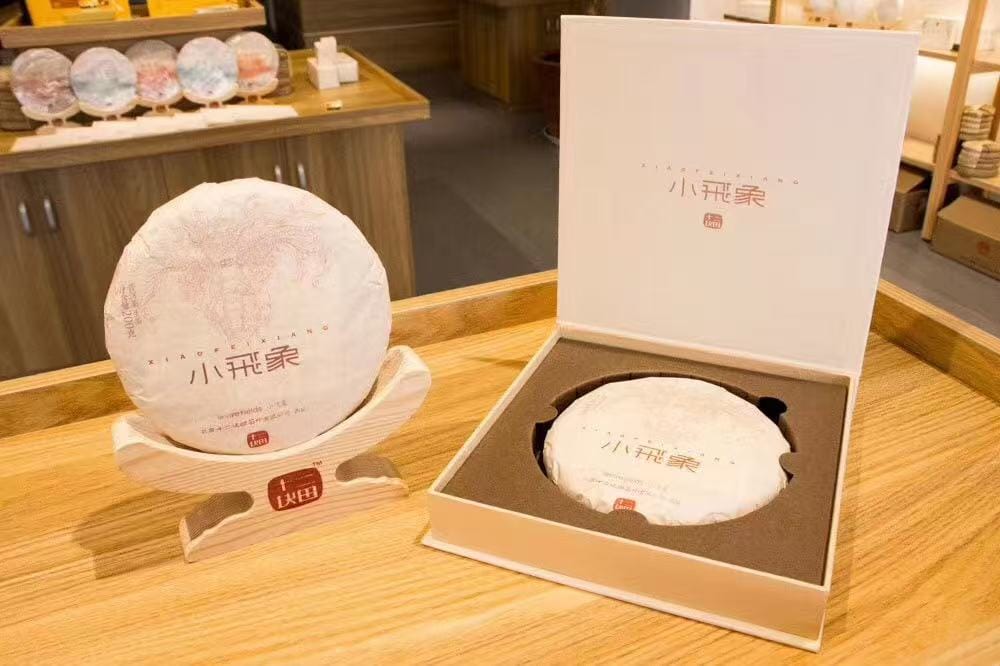Aging of the Six Tea Types(一)

Tea leaves in the storage process will occur in a variety of changes, these changes include both the physical properties of the change, but also involves the transformation of the chemical composition, the following is a specific introduction:
I. Color change
Green tea: the original bright green color will gradually darken. This is because the chlorophyll in tea leaves will be oxidized continuously during the storage process. Chlorophyll a will be transformed into demagnesium chlorophyll a, so that the tea loses its bright green color and becomes dark yellow. For example, just picked and made Longjing tea is bright green, after storing for a period of time, the color will slowly become yellow.Aging of the Six Tea Types
Yellow tea: During storage, chlorophyll will gradually decrease due to oxidative degradation, causing the color of tea leaves to change from bright green to yellowish brown. If the humidity of the storage environment is too high, the tea leaves may become moldy, affecting the appearance and quality.Aging of the Six Tea Types
Black Tea: Black tea will gradually deepen in color during the post-fermentation process. Under the action of microorganisms, the polyphenols in the tea leaves are continuously transformed, making the tea leaves change from the initial yellowish brown to reddish brown or even blackish brown. Pu-erh tea is a typical example, the color of new tea is lighter, and the color will become very dark after years of storage.Aging of the Six Tea Types
White Tea: The color of white tea will also change during storage. White teas such as White Hair Silver Needle and other white teas will gradually turn yellow, and the overall color of the tea leaves will also change from light to dark. This is due to the slow oxidation of the pigments in the tea leaves, while the transformation of substances within the tea leaves will also lead to color changes.Aging of the Six Tea Types
Black Tea: The color of black tea will also change during storage. Its pigment components such as theaflavin and thearubigin will oxidize and polymerize over time. The oxidation of theaflavin results in the formation of theaflavin, which gradually changes the color of black tea from bright orange-red to dark brown. For example, the soup color of newly made Zhengshan Xiaojiao black tea is bright golden yellow, and after years of storage, the soup color will become dark red.Aging of the Six Tea Types
Green Tea: For lightly fermented oolong tea, such as the clear-scented Tieguanyin, its green color will gradually fade to yellowish brown. For some heavily fermented oolong teas, the color change is relatively small, but it will also be due to the slow oxidation of tea polyphenols and other components, which will deepen the overall color of the tea.Aging of the Six Tea Types

2.Second, the aroma changes the volatilization and transformation of aroma components
Green tea: the aroma of green tea is mainly composed of aroma components with low boiling point, such as green leaf alcohol, green leaf aldehyde, etc., which will be volatilized gradually in the storage process. At the same time, the oxidation of tea polyphenols and other substances in the tea will produce some new aroma components, but the overall aroma will be fresh from the beans, flowers, etc. become more bland. For example, just fried Biluochun has a strong fruity and floral aroma, stored for a period of time, the fruity and floral aroma will be weakened.Aging of the Six Tea Types
Yellow tea: the aroma of yellow tea mainly comes from theanine, soluble sugar and other components. During storage, these components will change due to oxidation or microbial action. For example, theanine may decompose during storage, resulting in a weakened aroma.Aging of the Six Tea Types
Black Tea: Black tea undergoes significant changes in aroma during post-fermentation. Newly made black tea may have a strong smell of the pile, with the growth of storage time, the smell of the pile will gradually dissipate, and replaced by the aroma of aging, wood and so on. This is because under the action of microorganisms, the aroma components in the tea leaves are constantly transformed, and some undesirable odor components are decomposed, while generating new beneficial aroma components.Aging of the Six Tea Types
White Tea: The aroma of white tea also changes during storage. New white tea has a fresh fragrance, floral, etc., stored for many years, the aroma will be gradually transformed into lotus leaf fragrance, date fragrance. This is due to the slow oxidation and transformation of the aroma components in the tea, while the internal metabolism of the tea will also affect the change of aroma.Aging of the Six Tea Types
Black tea: the aroma of black tea is relatively complex, with theanol, geraniol and so on. In the storage process, these aroma components will also change. Tea enol and other components will slowly oxidize, so that the aroma of black tea from the initial sweet, fruity, etc. become more dull. Moreover, with the passage of time, some undesirable odor components in black tea (such as oxidized fatty acids produce a harry smell) may gradually appear.Aging of the Six Tea Types
Green tea: Oolong tea’s aroma changes are more specific. For the light-flavored oolong tea, its aroma will gradually transform from fresh floral and fruity aroma to mellow direction. As for the strongly flavored oolong tea, the aroma will become more mellow during the storage process, and some components such as woody and aged aroma will gradually appear. This is because the aroma precursor substances in the tea leaves undergo a series of chemical reactions during the storage process, generating new aroma components.Aging of the Six Tea Types
